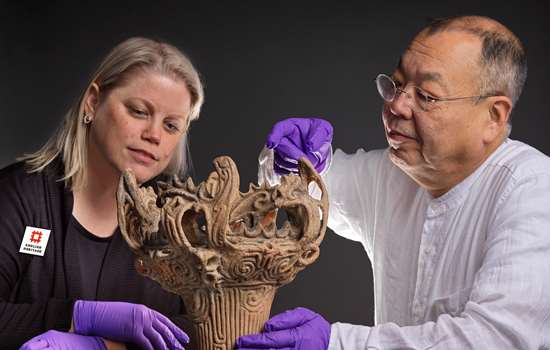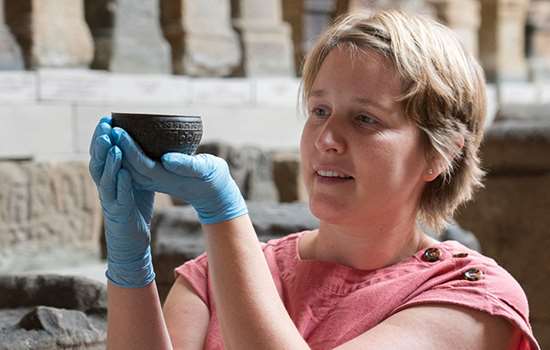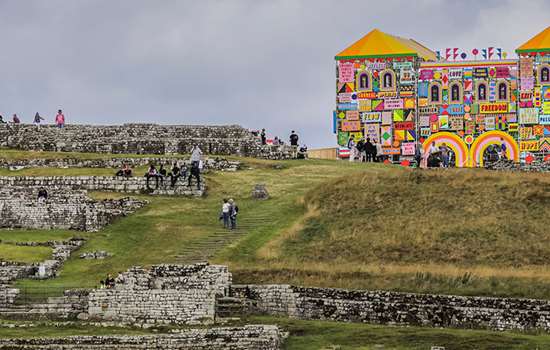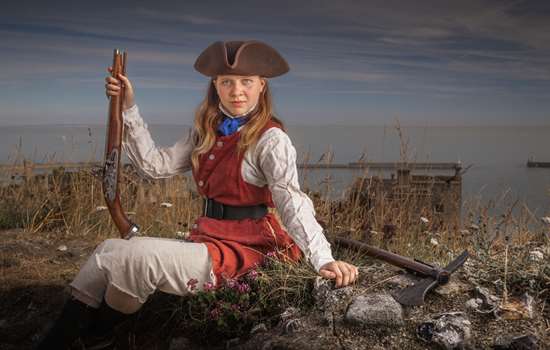09/06/2022
English Heritage launch Roman Face Pot Gallery
- Users can create their own digital pottery masterpiece and learn about how Roman face pots were made and (possibly) used
- Project built in collaboration with Luke Edward Hall, the artist and designer behind the cover of English Heritage’s 2022 Members’ Handbook
English Heritage have today (9 June) launched the Roman Face Pot Gallery, where users can create their own digital pottery masterpiece and learn about what these curious ceramic pieces might have meant to people living in Roman Britain.
Produced as part of the charity’s celebration of 1900 years since the creation of Hadrian’s Wall, the gallery has been developed in collaboration with Luke Edward Hall – the interior designer, artist and columnist whose colourful designs feature on the cover of English Heritage’s 2022 Members’ Handbook. Luke's illustrations appear across the face pot gallery, shaped by his love of storytelling and drawing inspiration from Roman Britain – in particular, from Hadrian’s Wall.
Face pots were widely used across the western provinces of Roman Britain and are some of the most striking artefacts we have to evidence everyday life under Roman rule. Modelled by hand on pottery wheels, these pots ranged from ultra-simple faces applied to the front and sides of functional containers, to very carefully modelled vessels representing life-like human heads with elaborate hair styles.
Despite their wide use, archaeologists aren’t entirely certain about the function or importance of Roman face pots. Potsherds have often been found at burial sites (suggesting they were used as cremation urns) and shrines (indicating a religious function) but also inside Roman forts and within domestic settings (where they were likely to have been used as cooking pots or storage jars).
One of the largest and most striking face pot examples within the English Heritage collection is a distinctive jar found at Corbridge Roman Town on Hadrian’s Wall. Representing the top half of a large vessel, its wavy hair, long straight nose and prominent ears demonstrate the detail (and sometimes crude) individuality of these fascinating hand-made ceramic pieces.
Frances McIntosh, English Heritage Collections Curator for Hadrian’s Wall, said:
‘Face pots are found across Britain, but there is a real cluster on Hadrian’s Wall, particularly at Corbridge. They are not made in moulds, so each one is unique and has their own personality.
I find them so intriguing; we don’t know who the faces represent, are they deities, the emperor, the customer who commissioned the pot? For me, I love that we don’t have all the answers, as it reminds us how much we still have to learn about life in Roman Britain. Just like the Roman pots, each pot someone makes on the online gallery will be individual, and will mean something different to each maker. ’
To view the Roman Face Pot Gallery, visit https://roman-face-pots.english-heritage.org.uk/gallery
To learn more about Roman Britain, visit https://www.english-heritage.org.uk/learn/story-of-england/romans/
For more from English Heritage, follow us on Twitter, Facebook and Instagram



